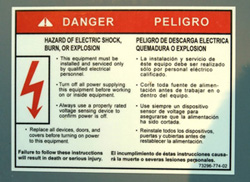
Conception and creation of safe design, along with safe installation and safe operation of industrial electrical equipment are the components that make up electrical engineering safety.
Many serious electrical injuries and deaths from electrocution have occurred when an electrical worker thought that a piece of electrical equipment was safely de-energized or it was assumed that all energy sources were properly disconnected. This incorrect assumption has resulted in numerous preventable electrical and arc flash injuries and/or deaths. Electrocution in the workplace is a serious problem. Each year, more workers are killed from electrocution than the combined deaths of police, fire and emergency rescue personnel. Approximately three million electrical workers in North America service electrical equipment and face the most risk of electrical burns if lockout tagout procedures are not properly complied with.
Electrical engineering safety focuses on:
Electrical engineering safety professionals focus on developing electrical engineering safety technologies like circuit protection devices (ground-fault circuit interrupters, circuit breakers, and fuses), which are designed to shutoff or automatically limit the flow of electricity when an overload, a ground-fault, an overload, or a short circuit happens in the wiring system.
Fuses and circuit breakers, for example, disconnect circuits in an event of an overload, which help prevent wires and components from over-heating that might be harmful to their operators. Another electrical engineering safety technology, ground-fault circuit interrupters (GFCI), on the other hand, shuts off the flow of electricity when a ground fault is detected. These electrical engineering safety devices are particularly useful in wet locations such as sinks.
Electrical engineering safety not only focuses on the safe design of electrical equipment, but ensures that these electrical engineering safety designs comply with a whole host of standards including NFPA 70E (workplace electrical safety standard in the U.S.) and CSA Z462-08 (workplace electrical safety standard in Canada). Some electrical engineering safety professionals also assist with the following: